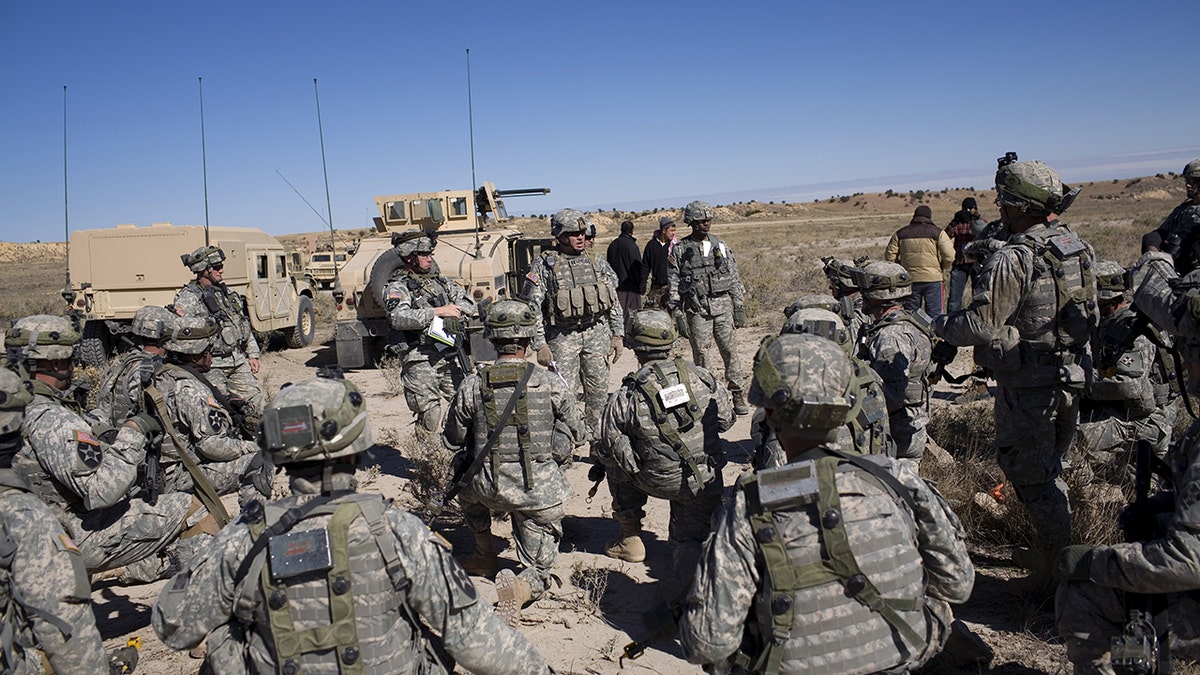Army veteran on how service dog helped him fight PTSD
Retired Master Sgt. David Crenshaw and his service dog, Doc, join "Fox News Live" to bring awareness to veterans suffering mental health issues.
Post-traumatic stress disorder (PTSD) is a mental health condition that develops in some people who have experienced a traumatic event.
Anyone who has witnessed or experienced a traumatic event can get PTSD. Some potential causes of PTSD include war, an assault or an accident.
One group for which PTSD is prevalent is veterans.
People of all ages can be affected. Those who have PTSD often experience feelings of fear or stress, even when there is no danger present.
COMBAT VETERAN AND WIFE HELP OTHERS FIGHT PTSD – AND FIND HEALING AND HOPE
A person must experience symptoms for longer than one month, and those symptoms must interfere with day-to-day life in order to be diagnosed with PTSD.
Below is a deeper look into PTSD, including common symptoms, dealing with triggers and common treatment options.

One group of people for which PTSD is prevalent is veterans. (Robert Nickelsberg/Getty Images)
- What are the symptoms of PTSD?
- How do you recover from PTSD triggers?
- What is the treatment for PTSD?
1. What are the symptoms of PTSD?
The symptoms of PTSD generally fall into four main categories.
- Re-experiencing
- Avoidance
- Changes in thinking/mood
- Changes in both physical and emotional reactions
One of the most common re-experiencing symptoms is a flashback. A flashback is when aspects of the traumatic event are relived, making one feel like the past event is happening at that moment.
Some other re-experiencing related symptoms are intrusive thoughts, nightmares and recurring memories related to the event. All of these things can cause physical changes to the body like pain, sweating, nausea and trembling.
AIR FORCE VETERAN AND HIS WIFE FACED PTSD HEAD-ON WITH THE HELP OF ALL SECURE FOUNDATION
Avoidance symptoms include a person doing things that take them away from the traumatic event. This could mean avoiding places or events that serve as a reminder of the traumatic occurrence, trying to avoid thinking or talking about the event, avoiding people that are a reminder of the event, and always feeling the need to keep busy.

A person with PTSD might experience symptoms that include re-experiencing the event, avoidance, changes in mood and thinking, plus changes in both physical and emotional reactions. (iStock)
Next, there are changes in mood or thinking symptoms. These symptoms include negative thoughts about oneself and the world, feeling hopeless about the future, problems with memory, difficulty maintaining close relationships, feeling detached from those around you, having a lack of interest in different activities, feelings of blame, feeling like you can’t trust anyone and feeling negative emotions.
CLICK HERE TO SIGN UP FOR OUR LIFESTYLE NEWSLETTER
Lastly, there are symptoms that revolve around changes in physical and emotional reactions.
These symptoms include panicking when reminded of trauma, getting upset easily, being overly alert, showing aggressive behavior, having a hard time concentrating, feeling jumpy, having a hard time sleeping, always being on guard, exhibiting self-destructive behavior and being easily frightened.
2. How do you recover from PTSD triggers?
There are many different techniques for dealing with triggers due to PTSD. Some common techniques for dealing with triggers when they happen include focusing on breathing, providing comfort with something like music or a favorite movie, creating distractions, using different grounding and relaxation techniques.
Another thing to do is keep a journal of triggers to try to spot patterns. Some things that could cause triggers to occur are certain places, words, smells or sounds.

Not everyone needs treatment for PTSD. For those who do, forms of psychotherapy are often used. (Oleksandr Rupeta/NurPhoto via Getty Images)
Other things to help deal with triggers are to confide in someone by talking about how you feel, finding a support group filled with people going through a similar situation, and finding specialists.
3. What is the treatment for PTSD?
Not everyone who has PTSD needs medical treatment because, for some, the symptoms start to go away over time.
For others, the symptoms do not go away and treatment is needed.
CLICK HERE TO GET THE FOX NEWS APP
A common treatment for PTSD is psychotherapy or talk therapy. Some common forms of psychotherapy for PTSD treatment are cognitive therapy, exposure therapy and eye movement desensitization and reprocessing.
There is also sometimes a need for medication to be administered.

